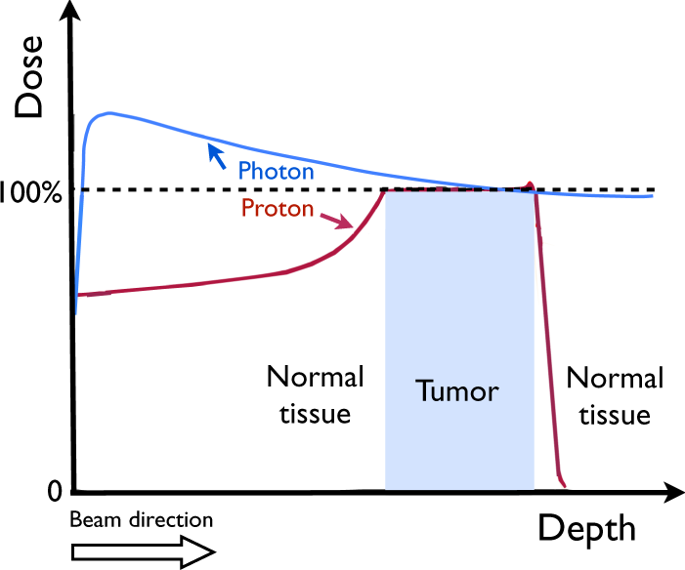当前位置:
X-MOL 学术
›
Prostate Cancer Prostatic. Dis.
›
论文详情
Our official English website, www.x-mol.net, welcomes your feedback! (Note: you will need to create a separate account there.)
Proton versus photon-based radiation therapy for prostate cancer: emerging evidence and considerations in the era of value-based cancer care.
Prostate Cancer and Prostatic Diseases ( IF 4.8 ) Pub Date : 2019-04-09 , DOI: 10.1038/s41391-019-0140-7 Sophia C Kamran 1 , Jay O Light 2 , Jason A Efstathiou 1
Prostate Cancer and Prostatic Diseases ( IF 4.8 ) Pub Date : 2019-04-09 , DOI: 10.1038/s41391-019-0140-7 Sophia C Kamran 1 , Jay O Light 2 , Jason A Efstathiou 1
Affiliation

|
BACKGROUND
Advances in radiation technology have transformed treatment options for patients with localized prostate cancer. The evolution of three-dimensional conformal radiation therapy and intensity-modulated radiation therapy (IMRT) have allowed physicians to spare surrounding normal organs and reduce adverse effects. The introduction of proton beam technology and its physical advantage of depositing its energy in tissue at the end-of-range maximum may potentially spare critical organs such as the bladder and rectum in prostate cancer patients. Data thus far are limited to large, observational studies that have not yet demonstrated a definite benefit of protons over conventional treatment with IMRT. The cost of proton beam treatment adds to the controversy within the field.
METHODS
We performed an extensive literature review for all proton treatment-related prostate cancer studies. We discuss the history of proton beam technology, as well as its role in the treatment of prostate cancer, associated controversies, novel technology trends, a discussion of cost-effectiveness, and an overview of the ongoing modern large prospective studies that aim to resolve the debate between protons and photons for prostate cancer.
RESULTS
Present data have demonstrated that proton beam therapy is safe and effective compared with the standard treatment options for prostate cancer. While dosimetric studies suggest lower whole-body radiation dose and a theoretically higher relative biological effectiveness in prostate cancer compared with photons, no studies have demonstrated a clear benefit with protons.
CONCLUSIONS
Evolving trends in proton treatment delivery and proton center business models are helping to reduce costs. Introduction of existing technology into proton delivery allows further control of organ motion and addressing organs-at-risk. Finally, the much-awaited contemporary studies comparing photon with proton-based treatments, with primary endpoints of patient-reported quality-of-life, will help us understand the differences between proton and photon-based treatments for prostate cancer in the modern era.
中文翻译:

质子与基于光子的前列腺癌放射治疗:基于价值的癌症护理时代的新证据和考虑因素。
背景技术放射技术的进步已经改变了局部前列腺癌患者的治疗选择。三维适形放射疗法和调强放射疗法 (IMRT) 的发展使医生能够节省周围正常器官并减少不良反应。质子束技术的引入及其在最大范围内将能量沉积在组织中的物理优势可能会潜在地节省前列腺癌患者的膀胱和直肠等关键器官。迄今为止的数据仅限于大型的观察性研究,这些研究尚未证明质子与 IMRT 的常规治疗相比具有明确的益处。质子束治疗的成本增加了该领域的争议。方法 我们对所有与质子治疗相关的前列腺癌研究进行了广泛的文献回顾。我们讨论了质子束技术的历史,以及它在治疗前列腺癌中的作用,相关的争议,新技术趋势,成本效益的讨论,以及正在进行的旨在解决前列腺癌的大型前瞻性研究的概述。质子和光子对前列腺癌的争论。结果 目前的数据表明,与前列腺癌的标准治疗方案相比,质子束治疗是安全有效的。虽然剂量学研究表明,与光子相比,前列腺癌的全身辐射剂量更低,理论上更高的相对生物学有效性,但没有研究表明质子有明显的益处。结论 质子治疗交付和质子中心商业模式的发展趋势有助于降低成本。将现有技术引入质子传递可以进一步控制器官运动并解决有风险的器官。最后,期待已久的当代研究将光子与基于质子的治疗进行比较,以及患者报告的生活质量的主要终点,将帮助我们了解现代前列腺癌的质子和基于光子的治疗之间的差异。
更新日期:2019-11-18
中文翻译:

质子与基于光子的前列腺癌放射治疗:基于价值的癌症护理时代的新证据和考虑因素。
背景技术放射技术的进步已经改变了局部前列腺癌患者的治疗选择。三维适形放射疗法和调强放射疗法 (IMRT) 的发展使医生能够节省周围正常器官并减少不良反应。质子束技术的引入及其在最大范围内将能量沉积在组织中的物理优势可能会潜在地节省前列腺癌患者的膀胱和直肠等关键器官。迄今为止的数据仅限于大型的观察性研究,这些研究尚未证明质子与 IMRT 的常规治疗相比具有明确的益处。质子束治疗的成本增加了该领域的争议。方法 我们对所有与质子治疗相关的前列腺癌研究进行了广泛的文献回顾。我们讨论了质子束技术的历史,以及它在治疗前列腺癌中的作用,相关的争议,新技术趋势,成本效益的讨论,以及正在进行的旨在解决前列腺癌的大型前瞻性研究的概述。质子和光子对前列腺癌的争论。结果 目前的数据表明,与前列腺癌的标准治疗方案相比,质子束治疗是安全有效的。虽然剂量学研究表明,与光子相比,前列腺癌的全身辐射剂量更低,理论上更高的相对生物学有效性,但没有研究表明质子有明显的益处。结论 质子治疗交付和质子中心商业模式的发展趋势有助于降低成本。将现有技术引入质子传递可以进一步控制器官运动并解决有风险的器官。最后,期待已久的当代研究将光子与基于质子的治疗进行比较,以及患者报告的生活质量的主要终点,将帮助我们了解现代前列腺癌的质子和基于光子的治疗之间的差异。


























 京公网安备 11010802027423号
京公网安备 11010802027423号